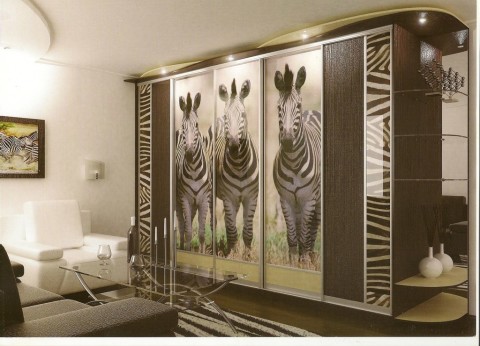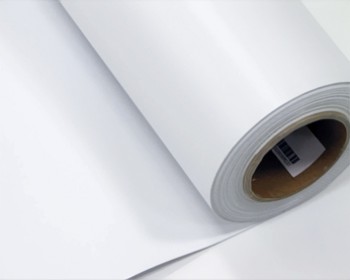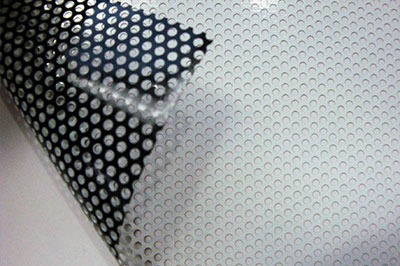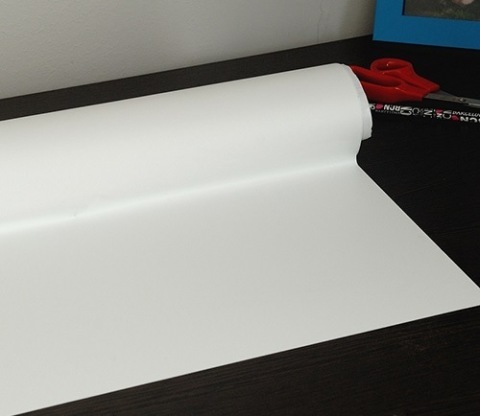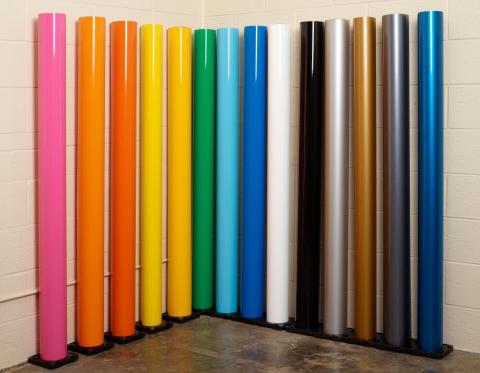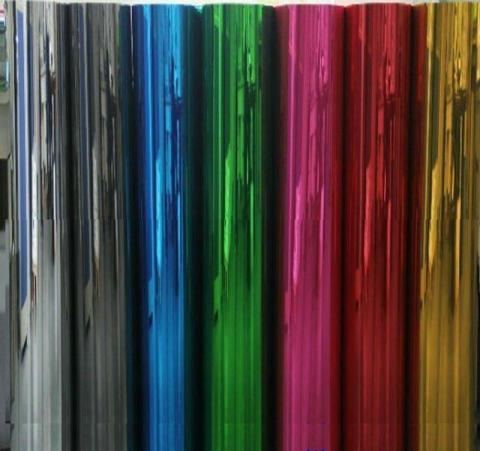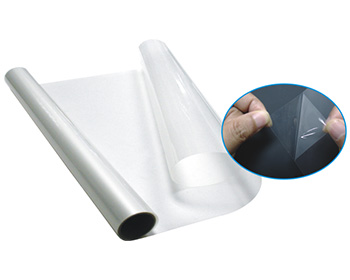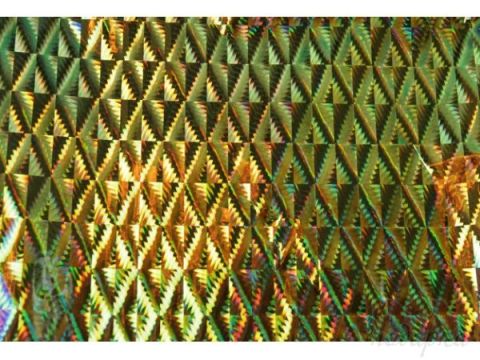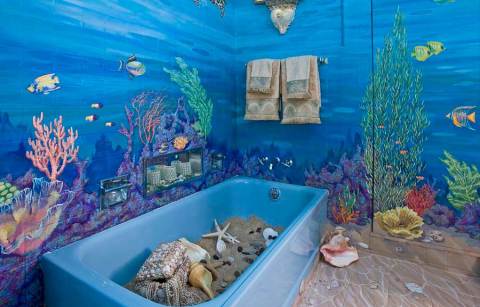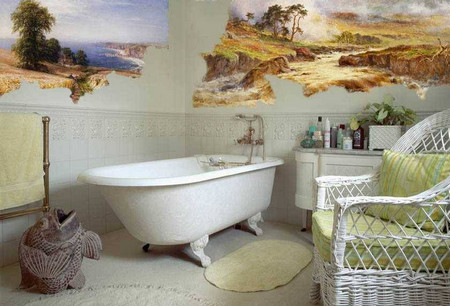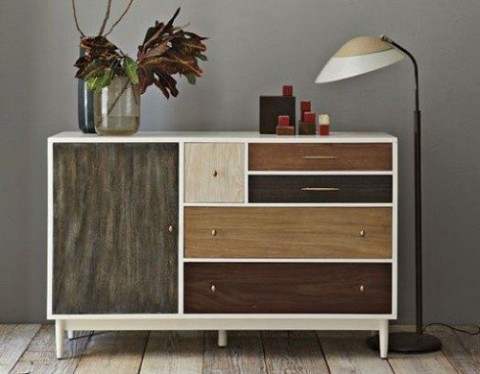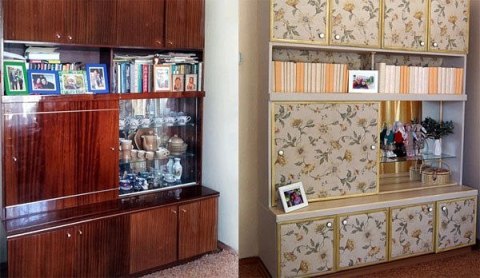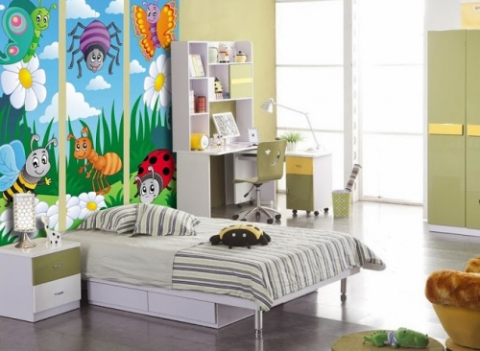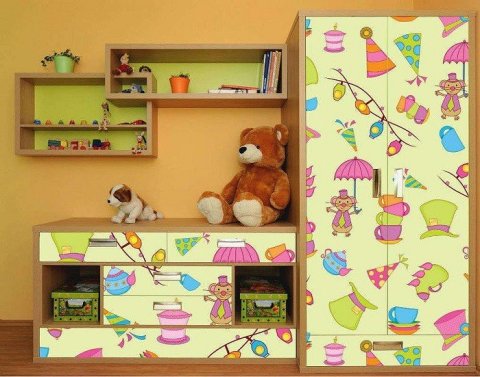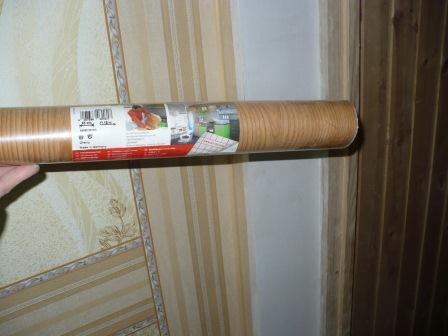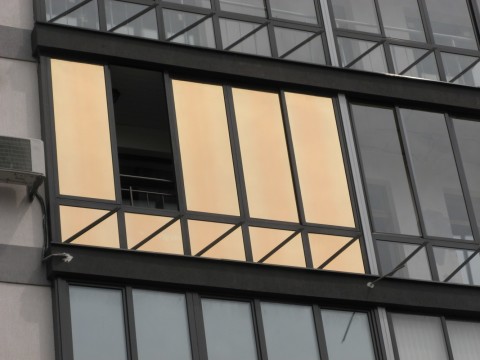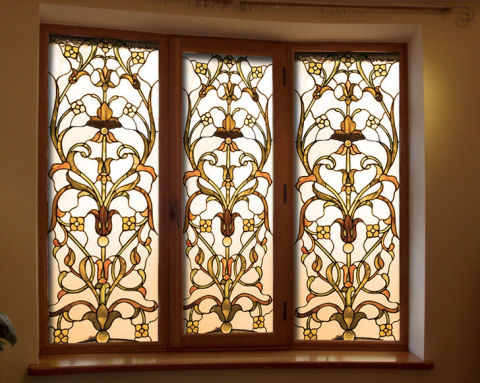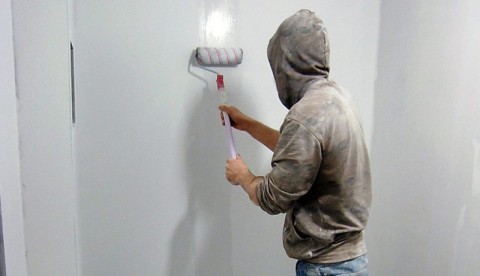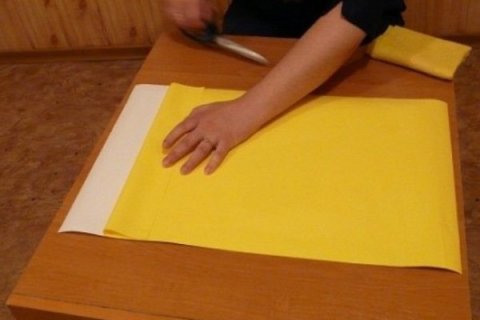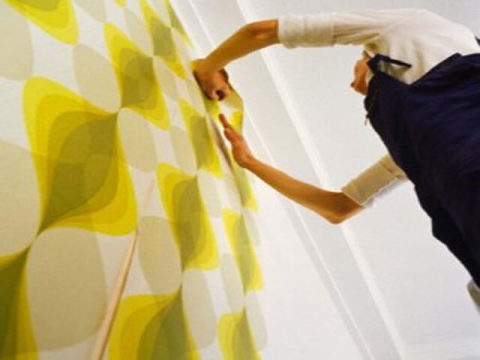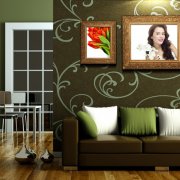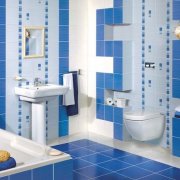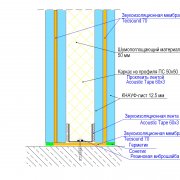Self-adhesive film for walls in different finishes and its characteristics
The protective film on the walls has recently been applied more and more often. It is different in its characteristics and applications.
It all depends on the base material and the result you want to achieve. Today we will consider this particular material, you will learn what it is made of and where it is used. They will also be told how to glue a self-adhesive film on the wall, because there are their own peculiarities and subtleties.
The content of the article
Material classification principles
Self-adhesive film on the walls is a fairly diverse and versatile material. This material has its own classification, each of the materials has its own parameters and properties. In the process of choosing a self-adhesive film, these properties should be given priority.
Self-adhesive film properties:
- Material structure;
- Material manufacturing components. For this, the seller has instructions for use and there is a composition;
- Type of surface;
- Appointment;
- So is the decorative design.
Attention: Self-adhesive film is not so expensive, so anyone can buy it. The price may vary only depending on the type and brand of the manufacturer.
In this line of materials there is also a heating film for walls, it is used for wall decoration when installing heating devices. It perfectly reflects heat from the plane.
There is also a membrane film for walls on sale, it is used in waterproofing and is very useful in construction.
Types of film according to the material used in the manufacture
Self-adhesive film on the walls is done by a combination of manufacturing components. The final characteristics depend on this.
As substances for the base are used:
- Polyester.
- Polyvinyl chloride.
- Propylene.
Attention: In the manufacture not only the basic substances are used, but also the combination of plasticizers, stabilizers. Quite often, paper and various fabrics are used.
Classification of self-adhesive film by structure
The structure of the canvas of self-adhesive films can be single-layer and two-layer:
Single layer film option | For the manufacture of a single-layer self-adhesive film using multicomponent solutions, which consist, inter alia, of polyvinyl chloride (PVC) resin and all kinds of plasticizers.
|
Two-layer film | To get a two-layer self-adhesive film, two separate different canvases are made - the base and the cover.
|
Caution: Before purchasing a self-adhesive film, think about where and how it will be used. Based on the findings, choose a film that suits your structure. This is necessary in order to increase the possible duration of operation.
By surface type
Also an important point. It is important to choose the right adhesive film by surface type. How the film will be in harmony with the surrounding objects depends on the type of surface.
Types of films by surface type:
Matte film option | Choose it if the film is needed for a room with good lighting |
Glossy film option | The opposite is matte; choose for not very bright rooms. |
Mirror version of the film | It will look beautiful in any room and also visually increase the volume. |
Transparent film option | It is needed in most cases for glass, transparent surfaces. |
Holographic film option | Suitable if you want to create an unusual effect. |
Attention: As mentioned above, the choice of the type of surface of the film should be taken seriously: the appearance of the room will depend on this. If in doubt, consult with professionals. It’s better to be safe again than to watch the bad taste in the room later.
Decorative possibilities
Self-adhesive film for the walls is represented in large quantities in retail chains. It can be used for finishing many surfaces. At one manufacturer, the number of different interesting types of paintings can be in the thousands. Which, in turn, creates the opportunity to choose for any need for every taste and budget.
The first option is standard. In this direction, many structures are presented that imitate natural materials:
- Veneer coating, and quite often people prefer to imitate valuable wood species;
- Finishing under a natural stone is also in demand;
- For kitchens, many choose a tile finish (seeWall decor in the kitchen: interesting ideas);
- There is also just a canvas;
- There is a cover for various fabrics;
- For the bedroom, some choose a tapestry finish;
- Children's stories are also popular.
Note: The design styles of self-adhesive film may contain just one tone, or a combination of different shades.
In the sales line there are also materials that have a special purpose:
- Styling under velvet;
- Imitation of cork cloth;
- Metal coating (here gold or silver coating);
- Special thick films to protect furniture surfaces or workplaces.
Attention: Also often on sale there is a special material on which you can draw yourself anything you like and then wash yourself. You can, of course, do this as much as you like.
Where is self-adhesive film used
Self-adhesive film on the wall is used in various types of rooms. It is often used to apply all kinds of indoor and outdoor advertising. However, where really can not do without a film, it is in design and construction. In these areas, the film is naturally applied wherever possible.
Self-adhesive film on the walls of the bathroom. The material of which the film is made, by its nature, does not leak moisture and prevents the appearance of mold, and therefore is an ideal option for wall decoration.Of the design solutions, it can be noted that the mirror-like finish will increase the space of the bathroom visually, while the holographic finish will simply look beautiful and fresh.
The film in the bathtub on the walls can be attached and in separate fragments, as decorations for different sections of the walls
Self-adhesive film for furniture. Here you can do whatever your heart desires. You can use a film with an imitation pattern of wood, stone or fabric, as it is now fashionable.
Each embodiment will bring something new to the interior or give a particular style to the room; for example, often a golden or silver film is glued in high-tech rooms. Interestingly, the film can both emphasize the shade of recently purchased furniture, and update the old one.
Film for work surfaces. Workstations and kitchen places are under continuous load, and are also exposed to all kinds of impact of extraneous sharp objects.
A large surface area can not withstand this practice for long, which leads to damage. However, to prolong the life of surfaces helps the film, which, as they say, takes a hit on itself. A beautiful and cheap solution to the problem.
Film for a children's room. It is used so that the child can not embarrass himself in his creative impulses, painting not a wallpaper, but a film, with which then everything is easily erased. In addition, the cover can be with thematic drawings, which, with the growth of children, calmly and easily change to suit their interests.
Also in the children's room you can make decoration of furniture. It can be bright and attract the attention of the baby.
Film for wooden door surfaces. Exactly the same beautiful solution to the problem as with film for work surfaces. The film will protect the door from scratches and chips, and, importantly, will not allow moisture to deform it. And again, thousands of design options allow you to find the best shade for the door and room.
Self-adhesive film for windows. In fact, there is a tinting of window surfaces to protect the sun's rays.
Of course, the degree of dimming is different, so that everyone selects his own. Also to this item is a self-adhesive film for window sills. The same thing - the film does not allow the paint on the windowsill to crack and crumble, and this frees the user from constant care of the surface, which translates into very good savings.
Film for transparent surfaces. Such a film also provides good protection against external influences. It is interesting that you can glue the entire glass plane with a self-adhesive film (including color), and you can glue it in separate fragments.
Now this practice is very popular among professional designers, as the film and a large open surface provide a huge selection of combinations of different colors and patterns.
Attention: Since PVC film is an exceptional material, it is better to understand all of its capabilities with expert advice.
Self-adhesive Film Parameters
Naturally, a huge selection of design styles is not the only thing that specialized stores are famous for:
- The convenience of the self-adhesive film is also in the fact that it is available in convenient forms. This is done in order to use all the material without leaving anything superfluous for the trash.
- As a rule, the film is sold in rolls of 15 meters in length, but the buyer chooses the width himself.General recommendations when choosing:
- For large surfaces, rolls 90 cm wide are usually taken;
- If the goal is to update or protect furniture and suitable surfaces, then the width of the roll should be from 450 to 675 mm;
- If the film will be glued to a small plane or used to decorate small elements, then the width should be from 53 to 106 mm.
How to stick a self-adhesive film
As mentioned above, the biggest plus of the self-adhesive film is ease of use. You can easily cope with this and can do it yourself. Therefore, you can safely come up with and try all kinds of sticker options. No one will bother you here, the only limitation is your imagination.
The order of work with a self-adhesive film (in order for you to succeed beautifully and soundly, the instructions just need to be followed and there will be no problems):
- The surface is being prepared. It must be cleaned of dirt, dust and grease. A special solution is used for each type of surface. If the film is glued to an unvarnished tree, then before starting work it is necessary to prime the base (seeTypes of construction primers and their scope).
- The film itself is prepared for the sticker: figures or patterns of a certain size are cut from it. The protective layer of the film is removed.
- The film is glued to the surface (it is important that there are no air bubbles under the film). Tip: if the film is glued to the wall, then you can do it much more reliable by additionally applying wallpaper glue. For greater plasticity of the film (it may be necessary for pasting roundness), you can heat it with something, for example, a hairdryer.
Summing up the foregoing, it becomes clear that a self-adhesive film on walls is not only protection of walls and objects from damage and old age, but a beautiful design move. However, versatility is not its only merit.
Such a film is resistant to damage and any extraneous impact, also it, as they say, “lives long”, has great color reproduction capabilities. The self-adhesive film adheres perfectly to any type of surface and is practically impervious to moisture. If you watch the video in this article and the photo, then you can do everything quickly, efficiently and without problems.
